Wingspan 18 m First flight December 13, 1936 | Length 13 m | |
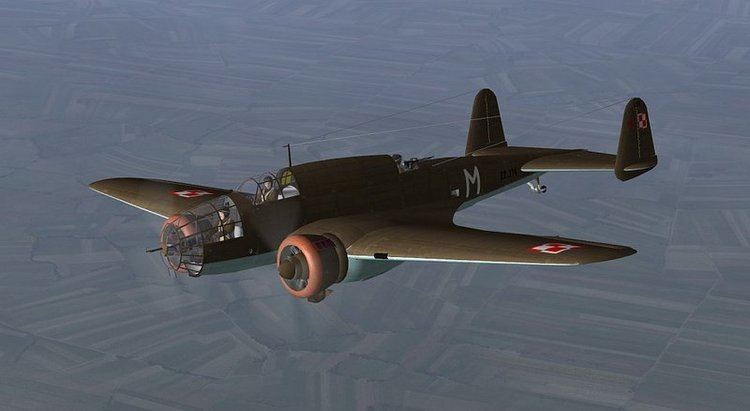 | ||
The PZL.37 Łoś (moose) was a Polish twin-engine medium bomber, used in the defense of Poland against the Nazi German Invasion in 1939. It is also known as "PZL P-37" or "PZL P.37", but the letter "P" was generally reserved for fighters of Zygmunt Pulawski's design (such as the PZL P.11).
Contents
- Design and development
- Technical design
- Operational history
- Preserved parts and models of PZL37 o
- Variants
- Operators
- Specifications PZL37B o
- References
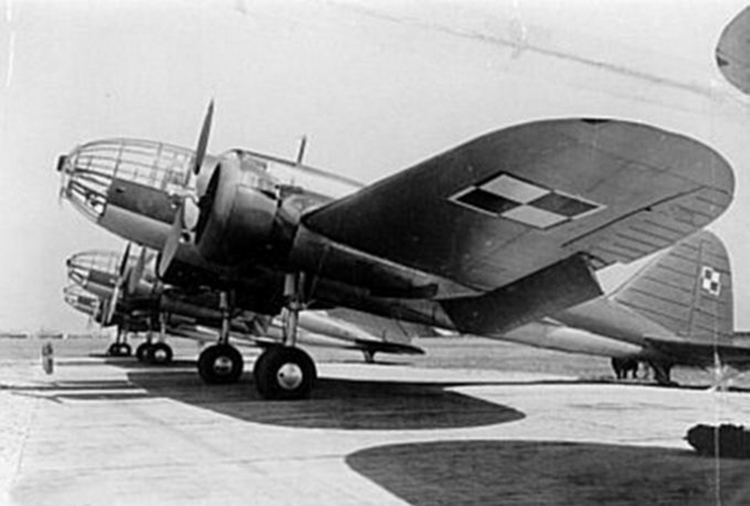
Design and development
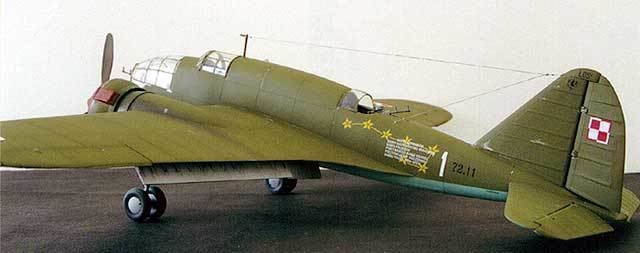
The PZL.37 was designed in the mid-1930s at the PZL factory in Warsaw by Jerzy Dąbrowski. The first PZL.37/I prototype, fitted with a single vertical stabilizer, flew on 13 December 1936. The second prototype PZL.37/II, with twin vertical stabilizers and other improvements, was accepted for production. The first 10 serial aircraft were produced in 1938 as the PZL.37A variant with a single vertical stabilizer, however. The next 19 interim aircraft were built as PZL.37A bis, with a twin tail. They all were powered by Bristol Pegasus XII B radial engines produced in Poland under licence.

The main production variant, the PZL.37B (or: Łoś II), was fitted with the twin tail and newer Pegasus XX engines. Production of PZL.37B for the Polish Air Force started in autumn 1938. During the initial period of PZL.37 service, 2 prototypes and 6 serial planes, were lost in crashes caused by technical problems, mostly with rudders. After some structural changes, the PZL.37B became a fully reliable aircraft. By the outbreak of World War II, about 92 PZL.37s had been produced and given to the Air Force, and a further 31 were in different phases of production.
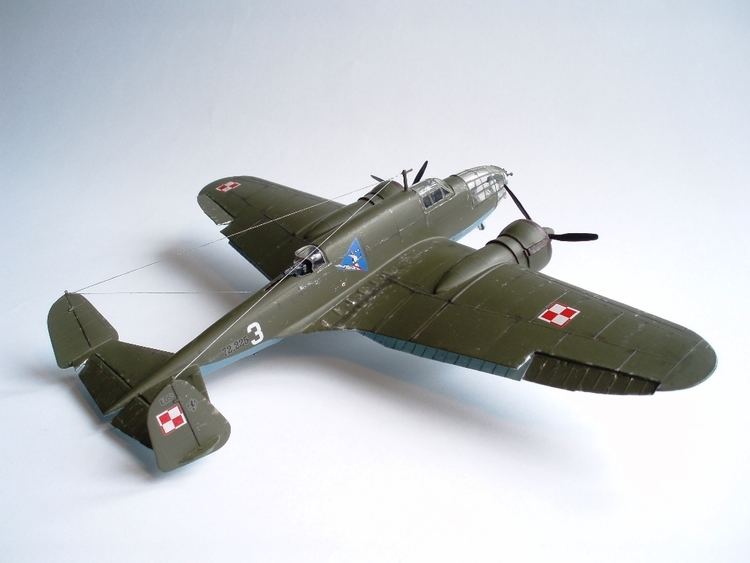
Before the war, the PZL.37B Łoś was one of the world's most advanced bombers. It was able to carry a heavier bombload than similar aircraft, for example the Vickers Wellington, though the size of the bombs was limited. Smaller than most contemporary medium bombers, it was relatively fast and easy to handle. Thanks to a landing gear with double wheels it could operate from rough fields or meadows. Typically for the late 1930s, its defensive armament consisted of only three machine guns, which proved too weak against enemy fighters.
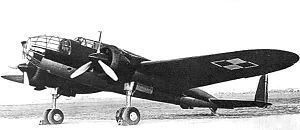
Starting with a presentation at a salon in Belgrade in June 1938 and in Paris in November, the PZL.37 met with a huge interest. For export purposes, new variants were developed: the PZL.37C with Gnome-Rhone 14N-0/1 engines of 985 cv (971 BHP, 724 kW), maximum speed 445 km/h and the PZL.37D with 14N-20/21 of 1,065 cv (1,050 BHP, 783 kW), maximum speed 460 km/h. In 1939, 20 PZL.37Cs were ordered by Yugoslavia, 12 by Bulgaria, 30 PZL.37Ds and license by Romania and 10, raw materials and parts for next 25 and license by Turkey and, finally, 12 aircraft for Greece. The Belgian company called Constructions Aéronautiques G. Renard received permission for license production 20-50 aircraft for Republican Spain but resigned in 1939. Also Denmark, Estonia, Finland and Iran were negotiating. The Polish military weren't allowed a deal with Iran due to "lack of production abilities". The outbreak of the war prevented the production of these aircraft. At that time, PZL developed the next variant for the Polish airforce, the PZL.49 Miś, but this was not completed before the war. Having slightly bigger dimensions, Miś ("Bear") was to be fitted with Bristol Hercules II engines of 1,350 BHP (1,370 cv, 1,007 kW), maximum speed 520 km/h and an upper turret.
Technical design
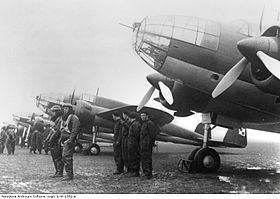
The aircraft was conventional in layout, all metal, metal-covered, with low-set wings and a twin tail. Originally a popular profile designed by Ryszard Bartel (also used in many other successful Polish airframes incl. PZL P.11) was planned for the aircraft; the need to store bombs inside wings forced modifications. Some publications claim the resulting profile displayed laminar-flow properties (one of the first in the world), but this is disputed - its shape which resembled laminar flow wings developed in later years, but this was largely fortuitous, and at any rate achieving the laminar flow regime would have required additional construction features (most importantly extremely smooth wings shaped with extreme precision) which the aircraft simply lacked. However, the profile did display lower drag than expected and the first A version had maximal speed 10% higher than the originally planned 360 km/h. The modified profile was viewed as highly successful and was later re-used for other projects (sometimes in further modified form; e.g. PZL.46 Sum, PZL.49 Miś, PZL.50).
The aircraft was quite small for its bomb load and range; it was allowed in part by a lift-generating, airfoil-shaped fuselage, which was another then-unusual feature (previously used e.g. on PZL.26 sports plane). It was much shorter and had smaller wings than many German and French counterparts; it was slightly larger than the Lockheed Model 10 Electra Amelia Earhart used. The crew consisted of four: pilot, commander-bombardier, radio operator and a rear gunner. The bombardier was accommodated in the glazed nose, with a forward machine gun. The radio operator sat inside the fuselage, above the bomb bay, and he also operated an underbelly rear machine gun. The main undercarriage retracted into the engine nacelles. The undercarriage was double-wheeled, with an independent suspension for each wheel. The plane was powered by two Bristol Pegasus radial engines. The PZL.37A had Pegasus XII B engines (normal power: 860 BHP (873 cv, 642 kW), maximum: 940 BHP (953 cv, 701 kW)), the PZL.37B had Pegasus XX engines (normal power: 905 HP (918 cv, 675 kW), maximum: 970 BHP (984 cv, 723 kW)).
The bombs were carried in two-section bomb bay in the fuselage (with space for 4 bombs) and 8 bomb bays in the central section of the wings (with space for 16 bombs). This arrangement of bomb bays imposed considerable restrictions on the types of bombs that could be carried, especially in the wing bays which were quite small as they had to fit between the ribs of the wing. The maximum load was 2,580 kg (2 × 300 kg and 18 × 110 kg). Apart from two 300 kg bombs in one of the fuselage bomb bays, it could not carry bombs larger than 110 kg. With maximum loadout, most of the weight of the bombs was carried inside the wings. There were no provisions for mounting bombs on the outside of the aircraft. During the Invasion of Poland in 1939, 110 kg was the maximum weight used, since the 300 kg bombs were only available in small quantities, and difficult to load at improvised airfields with little infrastructure. 50 kg bombs were also used. Maximal bomb load taken from soft surface runways was reduced to about 800–1200 kg.
Operational history
The Polish Air Force started to receive the Łos A in early 1938, with deliveries of the PZL.37B to operational units, slowed by delays in supply of the Pegasus XX engines and other equipment, in the autumn of 1938. On 1 September 1939, it had about 86 PZL.37s in total, but less than a half of those were used in combat. 36 PZL.37Bs were in four bomber escadres of a Bomber Brigade: the 11th, 12th, 16th and 17th escadres (two escadres with nine aircraft each, constituted a group, in Polish: dywizjon; the PZL.37 were in groups X and XV). The rest of the Bomber Brigade aircraft were PZL.23 Karaś. About 50 remaining PZL.37s were in the reserve XX group, training units or in repairs. Since only a few months were available to train the crews and complete the equipping of the bombers, the planes were not fully ready when the war broke out. For example, the extra internal fuel tanks were not in service, thus the maximum range of the bomber quoted in specifications was in practice not achievable.
Only the PZL.37s of the Bomber Brigade took part in combat. By 1 September, they had been deployed to rural improvised airfields, so they were not destroyed on the ground by the Germans in their initial attack on the main Polish airbases. However, because of this move away from developed airfields to short fields with poor surfaces, during the campaign the planes could take off with only a fraction of their maximum bomb load (typically 800 kg or 8 x 100 kg bombs), which limited their effectiveness. During the Invasion of Poland, from 4 September onward the planes of the Bomber Brigade were attacking German armoured columns in day attacks, forced by the desperate situation to perform this mission for which they were not designed (the original plans to bomb targets inside Germany were quickly abandoned). Most notably, they hampered the advance of the 16th Armoured Corps near Częstochowa and Radomsko. They suffered heavy losses due to lack of fighter protection, especially because they usually operated in units of no more than three aircraft at a time. The last combat flights took place on 16 September. During the campaign, the combat units were reinforced with several other aircraft, and about 46 PZL.37s were used in combat. Of the Bomber Brigade aircraft, ten PZL.37s were shot down by fighters, five shot down by enemy anti-aircraft artillery, two bombed on the ground and a further ten lost in other ways. A number of not fully completed, training or reserve PZL.37s were also destroyed on airfields and in factories (18 PZL.37s were bombed in a reserve base in Małaszewicze and in a factory in Warsaw – Okęcie).
Twenty-six or twenty-seven PZL.37s (17 from the Bomber Brigade and ten training ones) were withdrawn in 1939 to Romania. In October 1940, they were seized by the Romanian government and 23 were next used by the Romanian air force in the 4th Group, consisting of the 76th and 77th bomber escadres. Some were uparmed with four machine guns (the Polish PWU machineguns were still used). About one third were lost in crashes due to lack of experience of Romanian pilots with the PZL.37's handling and its high wing loading, and due to engine faults. About 15 were used against the USSR from 22 June 1941. Among others, they first operated in Bessarabia, then they were bombing Kiev and Odessa. Some were lost, mostly due to anti-aircraft fire. Due to a lack of spare parts, the remaining planes were withdrawn from the front in October 1941 and used for training. In April 1944, the 76th escadrille returned to combat, with nine aircraft, but it was withdrawn from the front on 3 May 1944. After Romania joined the Allies, on 1 September 1944, German aircraft destroyed five PZL.37s on the ground.
Captured planes were also tested in Germany and the USSR. Not many PZL.37s fell into German hands (probably only two), because Polish workers scrapped about 30 PZL.37s remaining in factories in Okęcie and Mielec in October 1939, under the pretext of cleaning up the area, before the German authorities were able to reconnoiter.
Preserved parts and models of PZL.37 Łoś
There are no surviving PZL.37 aircraft. It is possible that at least some examples survived after 1945 in Romania, but there were no active efforts from the post-war Polish Communist government to locate these aircraft and have them returned to Poland.
An original PZL Pegaz 20 engine of the type used in PZL.37 Łoś is in the collection of the Polish Aviation Museum in Kraków. This engine was sent from Poland to the United States in the spring of 1939 to be exhibited at the 1939 New York World's Fair and thus survived the war, and was returned to Poland in 2006.
A 1:1 scale non-flying model of PZL.37 Łoś was assembled at PZL Mielec factory, in the factory hall used to construct these bombers before the war. The dimensions of the model were determined only from photographs as very little of the original blueprints for the aircraft survive, nevertheless the model external shape matches the original very closely. It was constructed from aluminium and steel leftovers from aircraft under construction at the factory and was presented to the public in September, 2012. The interior of the plane was not reproduced, except the bombardier's position in the nose. Currently, the model is not easily accessible to the public, as it's part of internal exhibition of the Mielec factory.
A number of crash sites of PZL.37 Łoś shot down in September, 1939 have been identified and aircraft parts have been recovered from them. One crash site has a simple 1:1 model of the aircraft displayed as a monument. (photo)
Variants
Operators
Specifications (PZL.37B Łoś)
General characteristics
Performance
Armament
